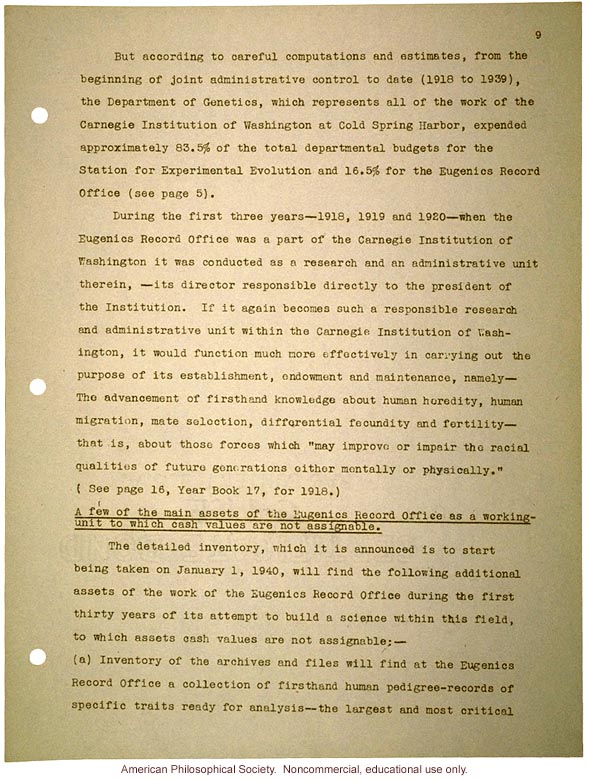But according to careful computations and estimates, from the beginning of joint administrative control to date (1918 to 1939), the Department of Genetics, which represents all of the work of the Carnegie Institution of Washington at Cold Spring Harbor, expended approximately 83.5% of the total departmental budgets for the Station for Experimental Evolution and 16.5% for the Eugenics Record Office (see page 5).
During the first three years - 1918, 1919 and 1920 - when the Eugenics Record Office was a part of the Carnegie Institution of Washington it was conducted as a research and an administrative unit therein, -- its director responsible directly to the president of the Institution. If it again becomes such a responsible research and administrative unit within the Carnegie Institution of Washington, it would function much more efficiently in carrying out the purpose of its establishment, endowment and maintenance, namely -The advancement of firsthand knowledge about human heredity, human migration, mate selection, differential fecundity and fertility - that is, about those forces which "may improve or impair the racial qualities of future generations either mentally or physically." (See page 16, Year Book 17, for 1918.)
A few of the main assets of the Eugenics Record Office as a working unit to which cash values are not assignable.
The detailed inventory, which it is announced is to start being taken on January 1, 1940, will find the following additional assets of the work of the Eugenics Record Office during the first thirty years of its attempt to build a science within this field, to which assets cash values are not assignable;-
(a) Inventory of the archives and files will find at the Eugenics Record Office a collection of firsthand human pedigree-records of specific traits ready for analysis - the largest and most critical


